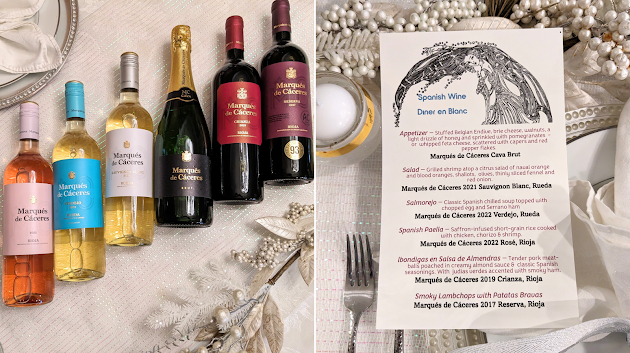You may know Grenache, or Garnacha as it is known in Spain, as a luscious red wine. But what about the lesser-known white Garnacha? We open two bottles to explore.
If you are a wine lover, chances are you’ve tasted Grenache, a red grape that’s grown around the world, most notably in France’s Rhône Valley, California, Australia, Italy (where it is called Cannonau), and Spain, where it is called Garnacha (or Garnatxa in Catalonia). It’s also widely used in rosé.
Red Grenache is used in the famed Châteauneuf-du-Pape blend in France, regional blends (with Cariñena), and in the GSM (Grenache, Mourvèdre, Syrah) blends popular in Australia and around the world. The red grape is known for its red berry, white pepper, and spice flavors. The final product can depend on the vessel in which it is aged (steel, oak, or cement).
Grenache Blanc (or Garnacha Blanca) is a more elusive creature. The grape originated in Northern Spain but is strongly associated with France’s Rhône and Languedoc-Roussillon regions. In Spain, the grape is found in Priorat, Aragon, and Terra Alta. You’ll also find the grape in Italy and in California’s Paso Robles AVA.
I consider Grenache Blanc a gem. It is a full-bodied white with low acidity and higher ABV than your average white wine. Whenever I see a bottle, I usually buy it. In this case, it provided a perfect opportunity to compare red and white Garnacha from Spain.
Chapillon 2018 Cuvée Paul, DO Calatayud
Cuvée Paul is a winning wine made with 100% Garnacha grown on 70-year-old gnarled vines in the Calatayud region. Calatayud is in the northeast central part of Spain in the Zaragoza province. It is in the Ebro River valley and is crisscrossed by many of the Ebro's tributaries. The soil is stony and loose.
Christophe Chapillon grew up in a winemaking family based in the Loire Valley, and he recognized the potential in Calatayud’s rocky soils years ago. He founded Chapillon Wines in 2006 in partnership with César Langa Gonzalez, whose vineyards have been in their family since 1867.
The 2018 Cuvée Paul is a plump wine rich with blackberries and candied cherries enhanced by spice and fresh mint flavors. It gets oak aging (12 months in American oak), so there is more body than some Rhône-style Grenache finished in concrete. This wine is a blast and should be paired with hearty red meat dishes, stews, or poultry. ABV is 14.5% and it is priced at about $15.
This bottle is perfect for those who love bold reds, especially those from France's Rhône Valley.
Herència Altés 2022 Garnatxa Blanca, DO Terra Alta
Herència Altés is a family-owned winery in Terra Alta, a DO located in the province of Tarragona in Catalonia. They speak Catalan, which is a distinct language from Spanish -- hence the different spelling of Garnatxa. As the name Terra Alta indicates, the region is in the mountains. Years ago I visited Tarragona. My hotel was a short distance from a Roman amphitheater and, indeed, the first grapes were planted by Romans centuries ago.
Experiences growing up among vines and a passion for the world of wine and this landscape encouraged Núria Altés and Rafael De Haan to start working in the family vineyards in 2010 and develop the project we now know as Herència Altés. Their focus is the Garnatxa varieties and Garnatxa Blanca is considered their flagship wine.
The south-easterly Garbí wind brings freshness from the nearby Mediterranean to the vineyards, which feature chalky soil and low rainfall. Garnatxa Blanca is drought-resistant and is the star variety in the region.
The grapes for the Altés Garnatxa Blanca are harvested by hand. They undergo a wild fermentation and only the free-run juice is used. Stainless steel tanks are used and the fermented wine stands on the lees for three months and gets regular stirring (batonnage) to add creaminess and structure to the wine. This is a fresh wine with notes of salinity and citrus mingling with peach and apricot flavors. It’s a bright refreshing wine perfect for tapas including squid. ABV is 13% and the cost is about $17.
We love Grenache/Garnatxa in its many iterations. From red Grenache aged in concrete with subtle flavors to white Garnacha that recalls the Mediterranean breeze, there is a bottle for every taste.









.jpg)
